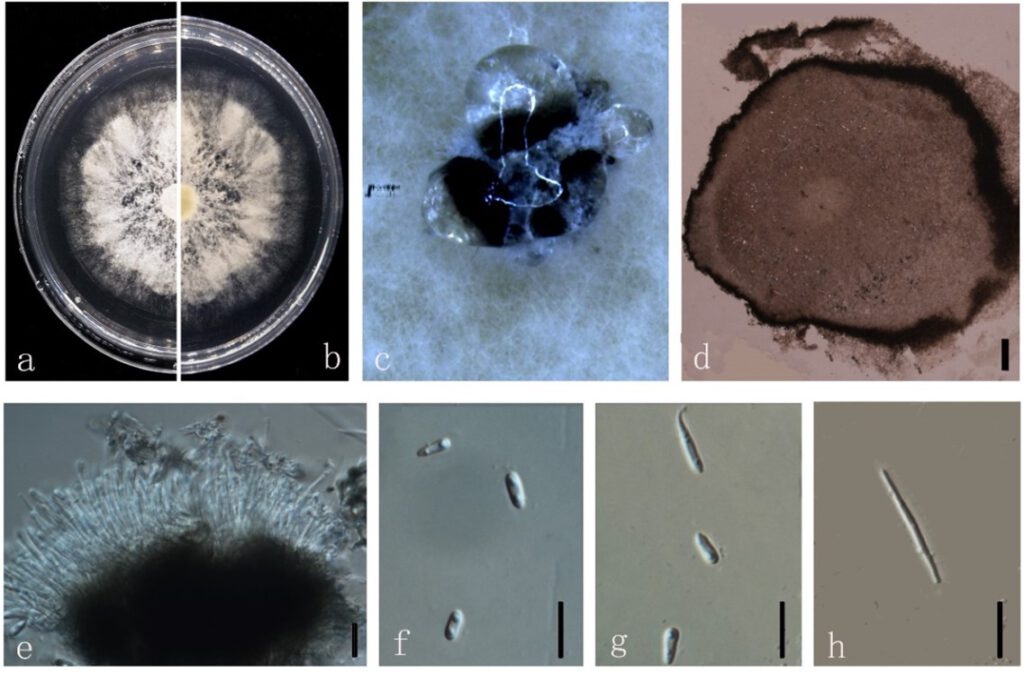Diaporthe heliconiae S.T. Huang, J.W. Xia, X.G. Zhang & Z. Li, in Sun, Huang, Xia, et al., MycoKeys 77: 76 (2021) (Figure 7)
MycoBank number: MB 837592; Index Fungorum number: IF 837592; Facesoffungi number: FoF 11351;
Endophytic on Morinda officinalis stem. Sexual morph: not observed. Asexual morph: Pycnidia 400–1680 μm × 230–1620 μm (`x = 1268 ± 325 μm × 1152 ± 354 µm), solitary or aggregated in groups, erumpent, thin-walled, superficial to embedded on PDA, dark brown to black, globose or subglobose, exuding transparent to dark brown conidial cirrus from the ostioles. Pycnidia wall parenchymatous, conidial cirrus extruding from ostiole appearing as transparent droplets. Conidiophores hyaline, smooth, densely aggregated, unbranched. Conidiogenous cell 15–40 × 1–3 µm (`x = 27 ± 5 μm × 2 ± 0.4 μm), hyaline, aseptate, cylindrical, straight to sinuous, branched. Alpha conidia 5–10 × 2–5 µm (`x = 6 ± 0.7 μm× 3 ± 0.4 μm), hyaline, smooth, aseptate, ellipsoidal, 2–4 guttulate, apex subobtuse, base subtruncate. Beta conidia 20–30 × 1–2 µm (`x = 26 ± 3 μm× 2 ± 0.3 μm), hyaline, aseptate, filiform, mostly straight and sometimes slightly curved, tapering towards the apex. Gamma conidia not observed.
Culture characteristics: Colonies on PDA reach 85 mm diam. after 15 days. Aerial mycelium abundant, cottony, white, dense in the center, sparse near the margin. White on surface side, then yellowish-brown; reverse white to brown.
Material examined: China, Guangdong Province, Zhaoqing, isolated from a healthy stem of Morinda officinalis. June 2020, W. Guo (dried culture (ZHKU 22-0035), and living culture (ZHKUCC 22-0047, 22-0048).
Habitat and host: Heliconia metallica [39].
Known distribution: China [39].

Figure 7. Diaporthe heliconiae (ZHKUCC 22-0047) (a) upper view of colonies on PDA; (b) Reverse view of colonies on PDA; (c) Pycnidia with conidial droplets on PDA; (d) vertical section of pycnidia; (e) Conidiogenous cells; (f,g) Alpha conidia; (h) Beta conidia. Scale bars: (d,e) =100 µm; (f–h) =10µm.
